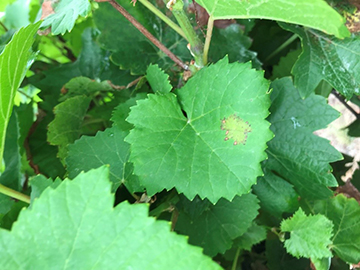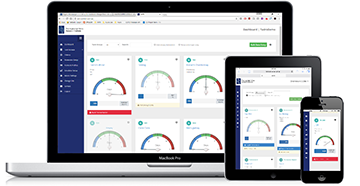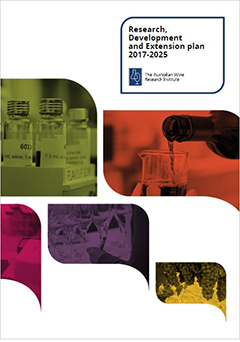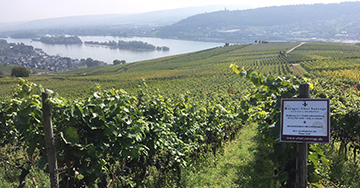Additional recent pest detections
- Two further detections of the exotic pest brown marmorated stink bug (Halyomorpha halys) have been reported in Horsley Park, NSW and Perth, WA.
- Dead and live bugs were found in separate shipments of electrical components and bricks that had been imported from Italy.
- The federal and state biosecurity agencies are working together to manage the incidents, using well established response arrangements and processes including chemical treatment and surveillance.
- Photos and technical information about brown marmorated stink bug can be found in this Plant Health Australia fact sheet.
Impact in vineyards and wineries
- Low numbers of brown marmorated stink bug (three per bunch) may result in physical damage to berries which predisposes them to bunch rots and yield loss.
- Brown marmorated stink bugs have a foul smelling odour when disturbed.
- Brown marmorated stink bugs are known to cause wine taint if they end up in ferments.
Identifying BMSB
BMSB is one of many nuisance stink bugs and is easily confused with other stink bugs, some of which are present in Australia. The appearance of BMSB changes through its lifecycle. Adult BMSBs are characterised by a 12-17 mm mottle brown coloured, shield-shaped body (see photos below).

BMSB egg mass (left) (photo: David Lance, USDA APHIS PPQ, Bugwood.org), nymph (middle) (photo: Gary Bernan, Bugwood.org), adult (right) (photo: Mohammed El Damir, Bugwood.org)
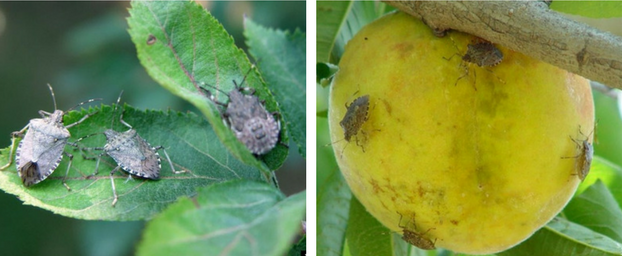
A collection of nymph and adult BMSBs on a leaf (left) and feeding damage on fruit caused by BMSB (photos: Gary Bernon, Bugwood.org)
Biosecurity awareness and reporting
Importers
- If growers or winemakers transport or receive goods from overseas, they should always keep an eye out for pests and other biosecurity risks. Pests stow away in shipping containers, on machinery, and inside cartons and packaging, including timber pallets.
- If you find any type of live pest while unpacking or moving your goods:
- Collect and contain a specimen.
- Re-seal any opened boxes, re-pack the container where possible, and shut the container doors.
- Don’t move the container, especially to an outside area.
- Report it quickly to the See. Secure. Report. hotline on 1800 798 636 for assistance.
Vineyards / wineries
- If growers or winemakers think they have seen BMSB (or any other exotic pest) in the vineyard or winery they should phone the Exotic Plant Pest Hotline on 1800 084 881.

For further information about wine industry biosecurity arrangements, please contact Andrew Weeks, CEO Australian Vignerons on 0403 520 242.
For technical information about brown marmorated stink bug, please contact the AWRI helpdesk on 08 8313 6600.


